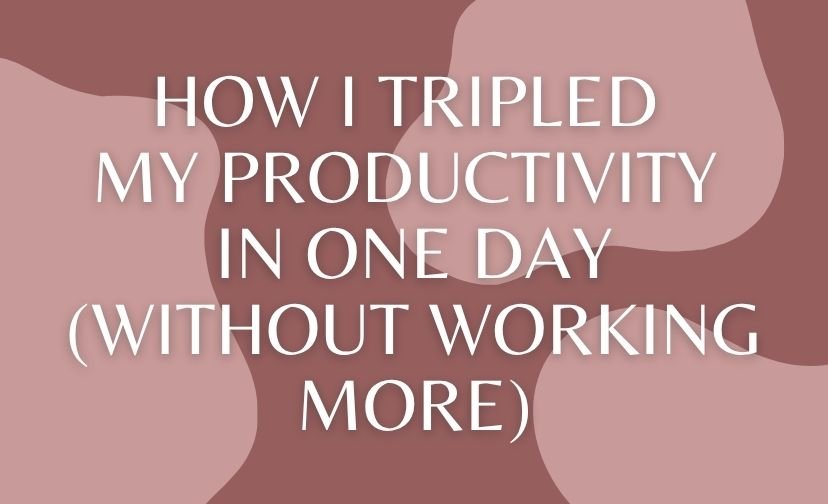Have you ever been juggling a conference call while trying to keep your home life in order? In today’s world, setting boundaries when working from home has become a crucial skill, yet it often leaves us feeling guilty.
The line between personal time and work hours can blur easily, making it feel like you’re always on the clock. This guide aims to help you establish those much-needed boundaries without the burden of guilt, ensuring a healthy work-life balance.
From understanding why boundaries are vital to practical tips for maintaining them, you’ll discover ways to reclaim your time and sanity.
Understanding the Importance of Setting Boundaries
In remote work, boundaries are not just important; they are essential. The freedom that comes with working from home can quickly turn into a double-edged sword if boundaries are not clearly defined.
Without them, work can seep into personal life, leading to burnout and stress. Establishing these boundaries helps create a separation between professional duties and personal time, which is key to maintaining mental health and productivity.
Why Boundaries Matter for Remote Work
Remote work offers flexibility, but it also demands discipline. Without clear boundaries, you may find yourself responding to emails at midnight or taking calls during dinner.
This lack of structure can lead to increased stress levels and decreased productivity. By setting boundaries, you not only protect your personal time but also enhance your work efficiency. It’s about creating a space where work doesn’t intrude into every aspect of your life.
Tip: Begin by identifying the times of day when you are most productive. Use this period for tasks that require intense focus. Schedule breaks around these times to ensure you have moments to recharge and prevent burnout.

The Connection Between Boundaries and Work-Life Balance
A solid work-life balance is like a well-tuned symphony, where each part complements the other without overwhelming it. Boundaries are the conductor of this symphony, guiding when work starts and stops and when personal time begins.
By drawing these lines, you cultivate an environment where both work and life can flourish without one overshadowing the other. This balance not only boosts happiness but also enhances overall life satisfaction.
Identifying Your Personal Boundaries
Before you can set boundaries, it’s important to understand what they should be. Identifying your personal boundaries involves a bit of introspection and honest assessment of your current work environment and personal needs.
This process will help you tailor boundaries specific to your situation and lifestyle, ensuring they are realistic and effective.
Assessing Your Work Environment
Your work environment plays a significant role in how you set boundaries. Take a close look at your current setup. Is your workspace conducive to productivity, or is it filled with distractions? Consider the physical and digital aspects of your environment.
A cluttered desk or an open social media tab can harm focus. Assessing your environment allows you to identify areas that need improvement, paving the way for effective boundary-setting.
Tip: Dedicate a specific area of your home as your workspace. This physical separation can help signal the start and end of your workday. Ensure this space is organized and free from non-work-related items to minimize distractions.

Recognizing Your Needs and Triggers
Understanding your needs and recognizing triggers is crucial in setting boundaries. Are there certain times of day when interruptions are more likely to occur? Do particular tasks drain your energy more than others?
By identifying these patterns, you can create boundaries that shield you from unnecessary stressors. Recognizing what you need to thrive helps you set boundaries that support your well-being and productivity.
Practical Tips for Setting Boundaries
Once you have identified your boundaries, it’s time to put them into practice. Here are some practical tips to help you establish and maintain boundaries effectively, ensuring a smooth and productive remote work experience.
Creating a Dedicated Workspace
A dedicated workspace is the cornerstone of setting boundaries when working from home. It signals to your brain that it’s time to focus on work. Ideally, this space should be separate from areas associated with leisure and relaxation.
Having a designated spot for work helps reinforce the mental switch between professional and personal modes, reducing the temptation to blend the two.
Tip: Personalize your workspace with items that inspire and motivate you, such as photos, plants, or quotes. This personal touch can make your workspace more inviting and motivate you to maintain boundaries.

Establishing Clear Work Hours
Setting clear work hours is akin to drawing a line in the sand. It defines when your professional responsibilities begin and end. Communicate these hours to your colleagues and stick to them as much as possible. This clarity not only helps manage expectations but also gives you the freedom to enjoy your personal time guilt-free.
- Decide on a consistent start and end time for your workday.
- Communicate your schedule to coworkers and family members.
- Use alarms or reminders to signal breaks and the end of the workday.
Communicating Boundaries to Family and Friends
Effective communication is key to setting boundaries with those around you. Let family and friends know your work schedule and the importance of respecting it. This open dialogue helps prevent misunderstandings and ensures everyone is on the same page.
Clear communication fosters respect and understanding, making it easier to maintain your boundaries.
| Boundary | Communication Strategy |
|---|---|
| Work Hours | Share your schedule and ask for support in sticking to it. |
| Break Times | Inform when you are available for casual conversations. |
| Workspace | Request privacy during work hours in your dedicated space. |
Using Technology to Maintain Boundaries
Technology can be both a boon and a bane regarding boundary-setting. Utilize tools and apps to help manage your time and tasks. For instance, calendar apps can block time for focused work, while project management tools can keep track of tasks and deadlines. Leveraging technology wisely ensures that it serves your boundaries rather than hinders them.
Tip: Set notifications to “Do Not Disturb” during work hours to minimize interruptions. Use productivity apps to track your time and analyze how you spend it, helping to refine your boundaries over time.

Overcoming Guilt While Setting Boundaries
Guilt can be a stubborn companion when establishing boundaries, often whispering that you neglect work or loved ones. Understanding and overcoming this guilt is essential to confidently maintaining your boundaries. With a shift in mindset, you can embrace boundaries as a form of self-care rather than a selfish act.
Understanding Guilt in Remote Work
Guilt often stems from the misconception that being available at all times equates to dedication. However, constant availability can lead to burnout and decreased productivity. Recognizing that boundaries are a necessary part of a healthy work-life balance is the first step in overcoming guilt.
Remember, prioritizing your well-being ultimately benefits both your personal and professional life.
Reframing Your Mindset
Reframing your mindset involves viewing boundaries as empowering rather than restrictive. Instead of seeing them as barriers, consider them bridges to a more balanced life.
Embrace the idea that setting boundaries allows you to be more present and effective in both work and personal spheres. This shift in perspective helps alleviate guilt and reinforces the positive impact of boundaries.
Maintaining Your Boundaries Over Time
Setting boundaries is not a one-time task; it’s an ongoing process that requires regular attention and adaptation. As your circumstances change, so too should your boundaries. Maintaining them involves a commitment to continually assess and adjust, ensuring they remain relevant and effective.

Regularly Reviewing Your Boundaries
Just as you would review your goals, regularly reviewing your boundaries is essential. Assess their effectiveness and make adjustments as needed.
Are there areas where boundaries have slipped? What new challenges have arisen that require boundary adjustments? This ongoing review process aligns your boundaries with your current needs and circumstances.
Adapting to Changing Circumstances
Life is dynamic, and so are your work and personal environments. Be prepared to adapt your boundaries as situations change. Whether it’s a new job role, a shift in family dynamics, or a global event impacting remote work norms, flexibility is key. Adaptation ensures that your boundaries continue to serve you well in any situation.
Real Stories: Success in Setting Boundaries
Hearing from others who have successfully set boundaries can be incredibly inspiring and reassuring. Real stories provide insight into practical strategies and the positive outcomes of boundary-setting. They remind us that we’re not alone in this journey and that success is attainable.

Personal Anecdotes from Remote Workers
Many remote workers have found creative ways to set boundaries that suit their unique situations. For instance, one worker transformed their closet into a mini-office, providing a quiet and dedicated space.
Another embraced the power of morning rituals to mark the transition from home life to work mode. These anecdotes illustrate that with a bit of ingenuity, effective boundaries are within reach.
Expert Insights on Boundary Setting
Experts agree that setting boundaries is vital for long-term remote work success. They emphasize the importance of communication, self-awareness, and flexibility.
According to psychologists, boundaries are a form of self-care, crucial for preventing burnout and maintaining mental health. These insights highlight the broader significance of boundaries beyond just managing work and personal life.
In conclusion, setting boundaries when working from home is possible and essential for maintaining a healthy work-life balance. By understanding the importance of boundaries, identifying personal needs, and implementing practical strategies, you can overcome guilt and enjoy a more fulfilling remote work experience.
Remember, boundaries are your allies in creating a life where work and personal pursuits can thrive harmoniously.





